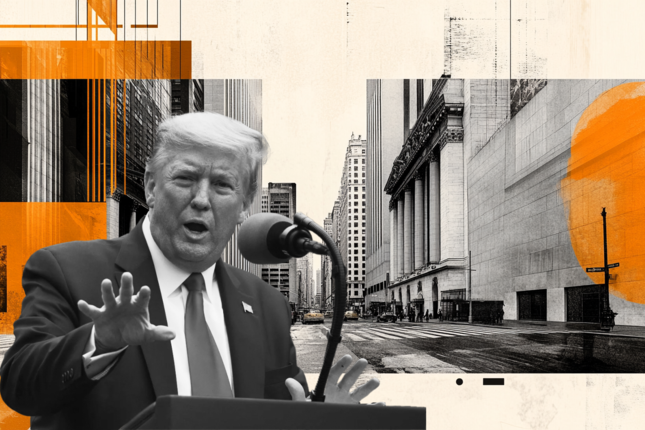- Manufacturing sentiment depressed by global trade disputes
- Business spending weak
- Consumer sector maintains even keel
The Institute for Supply Management (ISM) will issue its purchasing managers’ index (PMI) for the manufacturing sector in August on Tuesday September 3rd at 14:00 GMT, 10:00 EDT.
Forecast
The purchasing managers’ index is expected to slip to 51.0 in August from 51.2 in July. The prices paid index is predicted to rise to 46.3 from 45.1. The employment index was 51.7 in July and 54.5 in June. The new orders index was 50.8 in July and 50.0 in June.
ISM Survey
The Institute surveys “a group made up of more than 300 purchasing and supply executives from across the country.” They answer a “monthly questionnaire about changes in production, new orders, new export orders, imports, employment, inventories, prices, lead times, and the timeliness of supplier deliveries in their companies comparing the current month to the previous month.” The responses are scored on a scale with 50 as the division between expansion (above) and contraction (below). *Quotations from the Institute for Supply Management website.
US, China and manufacturing: Waiting for trade
The manufacturing sectors in China and the United States have been hard hit as the trade war and the prospective fallout from the British exit from the European Union has degraded global economic growth.
The US PMI manufacturing index has dropped from 60.8 in August 2018, the highest score in 15 years, to 51.2 in July the lowest reading in three. The two most important sub-indexes, employment and new orders have plunged in tandem with the headline. Employment has dropped from 59.2 in February 2018 to 51.7 in July and new orders have fallen from 67.3 in December 2017 and 64.5 in August 2018 to 50.0 in July and 50.8 in July.
Reuters
The sharp decline in attitudes and business in the manufacturing sector has come as the US economy has maintained moderate economic growth, 3.0% in 2018 and 2.55% in the first half of this year with a current 2.0% estimate for the third quarter from the Atlanta Fed.
The optimistic belief that the US and China would be able to settle their trade differences that prevailed for most of 2018 received a sharp blow in May from which it has not recovered when China refused to agree to previously negotiated terms to produce a draft treaty. Since then competing accusations and tariffs by both sides have been the most of the dialogue.
China indicated a willingness to resume negotiations this week saying that the trade war should be resolved with a “calm attitude.” The two sides resumed talks at a “different level” on Thursday according to US President Donald Trump.
Optimism was muted on the US side, “Let’s see what the end product is; that’s what you have to judge it by,” Trump said.
The Chinese economy, which is far more dependent on manufacturing and exports than the US, has seen it slowest official growth in a generation in the last quarter at 6.2%.
Reuters
The purchasing managers’ index in manufacturing from the government’s National Bureau of Statistics has been below 50 for four months and for seven of the last nine months. The decline in sentiment mirrored that in the US though it started from a much lower level.
Reuters
US manufacturing employment
The drop in the overall manufacturing PMI sentiment and employment has been partially reflected in actual employment numbers in the Non-Farm Payroll report.
In the six months from February that have seen the rapid fall in the manufacturing employment PMI the three months moving average of new hires has dropped from 15,000 in February to 10,000 in July. The last two reported months, June and July, averaged 14,000.
Reuters
The August payroll numbers will be reported on September 6th with 159,000 expected overall and 7,000 in manufacturing. If those forecasts are accurate that would leave the three month moving averages at 172,000 for NFP and 11,700 in manufacturing. Those are not the figures of a pending collapse in employment. The other significant labor indicators, initial jobless claims, unemployment and ADP payrolls remain healthy.
Conclusion
The precipitous fall in US manufacturing PMI this year may have as much to do with disappointment that the trade talks with China did not fulfill their original promise, which would have provided a substantial boost to the factory sector, as being an accurate reflection of the state of the US economy.
The US-China trade relationship has assumed a mildly acrimonious but functional aspect. The negotiations and the public view of them are now based in realism and much clearer ideas of the competing national interests at stake. This new normal in the US China may not be as dangerous as the Fed feared when it paid the first economic insurance premium in July.
The US labor market continues to fuel a buoyant consumer economy. Domestic manufacturers could regain some of their optimism if sales continue at their present pace. The US and China may be at trade loggerheads, but the American consumer is paying little attention.
Information on these pages contains forward-looking statements that involve risks and uncertainties. Markets and instruments profiled on this page are for informational purposes only and should not in any way come across as a recommendation to buy or sell in these assets. You should do your own thorough research before making any investment decisions. FXStreet does not in any way guarantee that this information is free from mistakes, errors, or material misstatements. It also does not guarantee that this information is of a timely nature. Investing in Open Markets involves a great deal of risk, including the loss of all or a portion of your investment, as well as emotional distress. All risks, losses and costs associated with investing, including total loss of principal, are your responsibility. The views and opinions expressed in this article are those of the authors and do not necessarily reflect the official policy or position of FXStreet nor its advertisers. The author will not be held responsible for information that is found at the end of links posted on this page.
If not otherwise explicitly mentioned in the body of the article, at the time of writing, the author has no position in any stock mentioned in this article and no business relationship with any company mentioned. The author has not received compensation for writing this article, other than from FXStreet.
FXStreet and the author do not provide personalized recommendations. The author makes no representations as to the accuracy, completeness, or suitability of this information. FXStreet and the author will not be liable for any errors, omissions or any losses, injuries or damages arising from this information and its display or use. Errors and omissions excepted.
The author and FXStreet are not registered investment advisors and nothing in this article is intended to be investment advice.
Recommended Content
Editors’ Picks

EUR/USD extends gains toward 1.1400 after German sentiment data
EUR/USD stretches higher toward 1.1400 in the European session after upbeat German business sentiment data. The pair's solid uptick could also be linked to the latest leg down in the US Dollar as concerns re-emerge over Trump's tariff plans with China and Japan.

GBP/USD holds firm near 1.3300 on intense US Dollar weakness
GBP/USD rises further to test 1.3400 in European trading on Thursday, snapping a two-day losing streak. Uncertainty over US President Donald Trump's tariff plans returns and sends the US Dollar sharply lower across the board, suporting the pair. Mid-tier US data awaited.

Gold price trims part of intraday gains, still well bid above $3,300 mark
Gold price regains positive traction as fading US-China trade optimism revives safe-haven demand. The US economic worries and Fed rate cut bets undermine the USD, also benefiting the commodity. A positive risk tone might hold back the XAU/USD bulls from placing aggressive bets and cap gains.

SEC Crypto Task Force plans to establish digital asset regulatory sandbox
The Securities & Exchange Commission's Crypto Task Force met with El Salvador's National Commission on Digital Assets representatives to discuss cross-border regulation and a proposed cross-border sandbox project.

Five fundamentals for the week: Traders confront the trade war, important surveys, key Fed speech Premium
Will the US strike a trade deal with Japan? That would be positive progress. However, recent developments are not that positive, and there's only one certainty: headlines will dominate markets. Fresh US economic data is also of interest.

The Best brokers to trade EUR/USD
SPONSORED Discover the top brokers for trading EUR/USD in 2025. Our list features brokers with competitive spreads, fast execution, and powerful platforms. Whether you're a beginner or an expert, find the right partner to navigate the dynamic Forex market.